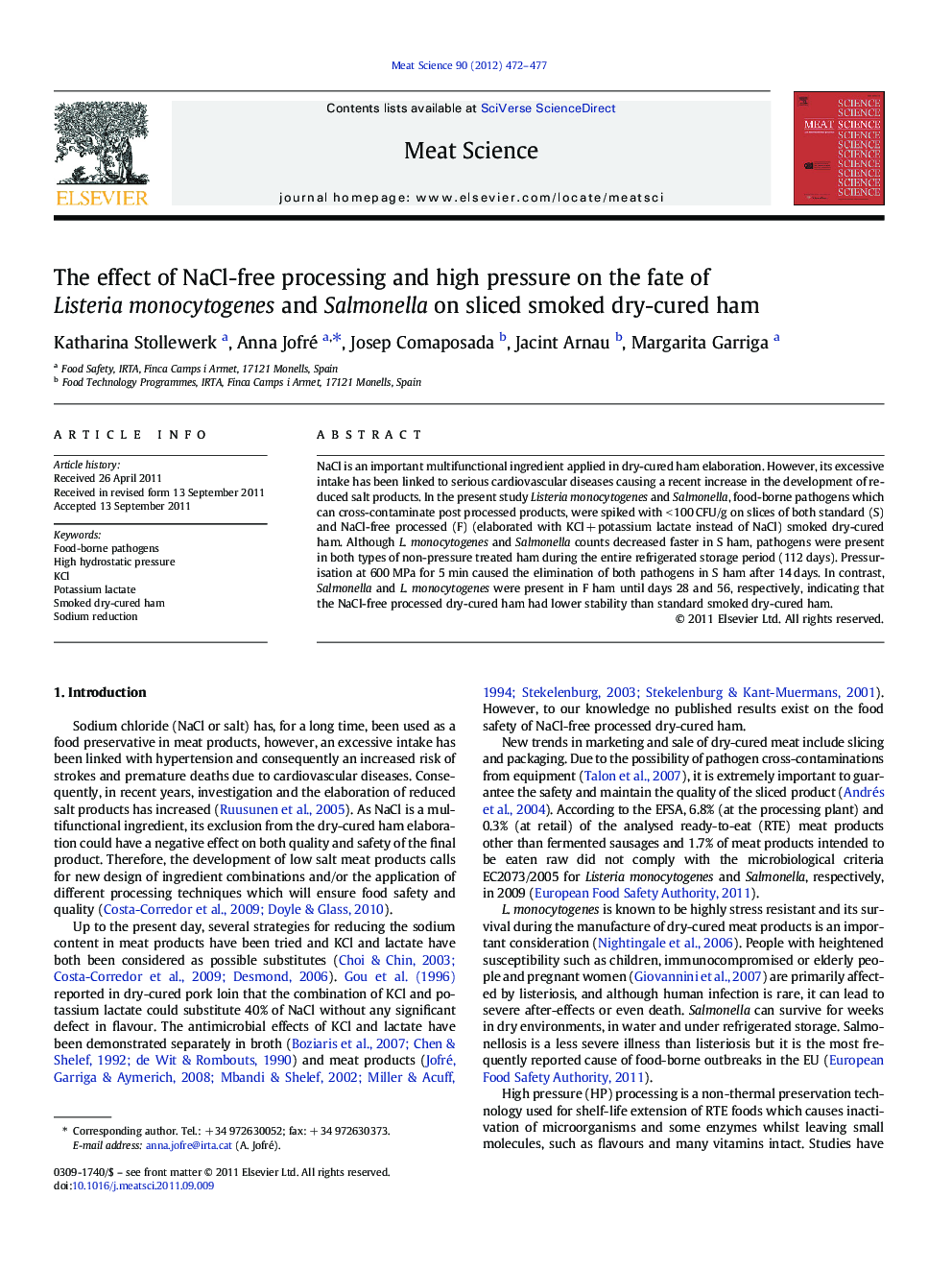| Article ID | Journal | Published Year | Pages | File Type |
|---|---|---|---|---|
| 2450262 | Meat Science | 2012 | 6 Pages |
NaCl is an important multifunctional ingredient applied in dry-cured ham elaboration. However, its excessive intake has been linked to serious cardiovascular diseases causing a recent increase in the development of reduced salt products. In the present study Listeria monocytogenes and Salmonella, food-borne pathogens which can cross-contaminate post processed products, were spiked with < 100 CFU/g on slices of both standard (S) and NaCl-free processed (F) (elaborated with KCl + potassium lactate instead of NaCl) smoked dry-cured ham. Although L. monocytogenes and Salmonella counts decreased faster in S ham, pathogens were present in both types of non-pressure treated ham during the entire refrigerated storage period (112 days). Pressurisation at 600 MPa for 5 min caused the elimination of both pathogens in S ham after 14 days. In contrast, Salmonella and L. monocytogenes were present in F ham until days 28 and 56, respectively, indicating that the NaCl-free processed dry-cured ham had lower stability than standard smoked dry-cured ham.
► We compare food safety of standard and NaCl-free processed dry-cured ham. ► NaCl was substituted by KCl and potassium lactate. ► A challenge test with low levels of L. monocytogenes and Salmonella was performed. ► NaCl-free ham had a higher food safety risk compared to the standard product. ► Pressurization was necessary to eliminate pathogens from both types of ham.
